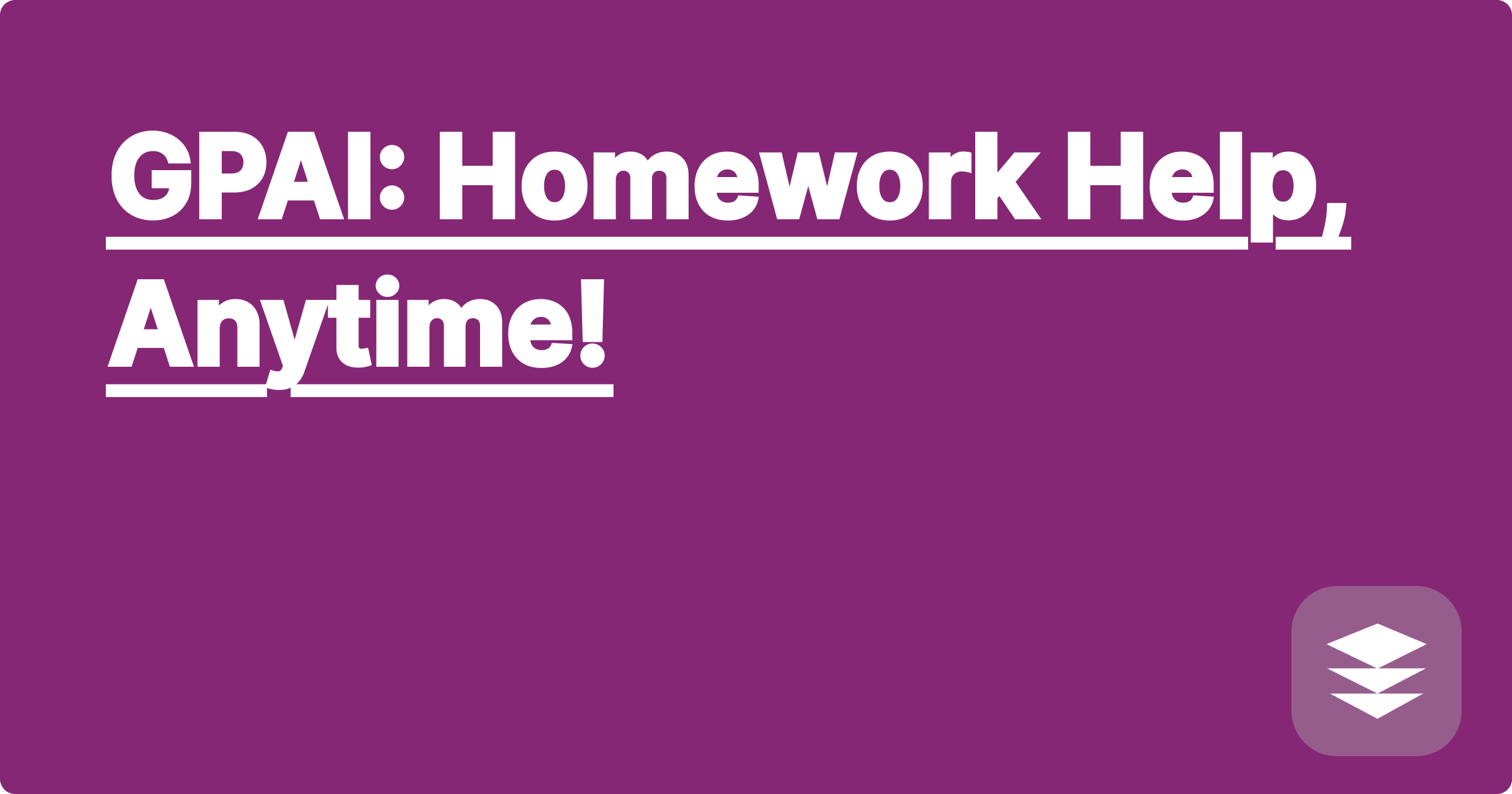
The demanding world of STEM education often leaves students and researchers grappling with complex problems, requiring extensive time and effort. From intricate mathematical equations to elaborate coding assignments, the challenges can seem insurmountable. Artificial intelligence (AI) has emerged as a powerful tool to alleviate these burdens, providing readily available support for a variety of STEM subjects. Imagine having a virtual tutor accessible 24/7, capable of guiding you through challenging concepts, verifying calculations, and even generating code snippets. This is the promise of Generative Pre-trained Transformer (GPAI) models, offering a new era of “homework help, anytime.”
This accessibility to AI-powered assistance is transforming the learning landscape for STEM students and researchers. It provides an opportunity to deepen understanding, accelerate progress, and ultimately achieve greater success in academic pursuits. By leveraging these tools effectively, students can move beyond simply finding answers and instead focus on developing a deeper comprehension of the underlying principles. Researchers can also benefit from the ability to quickly explore complex datasets, generate hypotheses, and automate tedious tasks, freeing up valuable time for more creative and strategic work.
STEM fields are inherently complex, requiring mastery of intricate concepts and technical skills. Students often face difficulties grasping these concepts, leading to frustration and a sense of being overwhelmed. The traditional methods of seeking help, such as consulting textbooks or attending office hours, can be time-consuming and may not always provide the personalized support needed. Furthermore, the rapid pace of advancements in STEM fields means that information can quickly become outdated, making it crucial for students to have access to up-to-date resources and support. Researchers also face similar challenges, often needing to navigate vast amounts of data and complex algorithms. The ability to quickly and accurately analyze this information is critical for making progress in their research, but can be a significant bottleneck.
AI-powered tools like ChatGPT, Claude, and Wolfram Alpha offer a revolutionary approach to STEM learning and research. These tools can provide on-demand support for a wide range of tasks, from solving mathematical equations to generating code in various programming languages. ChatGPT and Claude, for instance, excel at explaining complex concepts in a conversational manner, making them ideal for understanding difficult topics. Wolfram Alpha, on the other hand, specializes in computational knowledge and can provide detailed solutions to mathematical problems, including step-by-step derivations. These tools are not just about finding answers; they can also help users develop a deeper understanding of the underlying principles by providing explanations, visualizations, and alternative approaches.
Using these AI tools is remarkably straightforward. First, clearly define the problem or question you need help with. This might involve formulating a specific mathematical equation, outlining a coding task, or articulating a conceptual question. Next, choose the appropriate AI tool for the task. For conceptual questions or coding assistance, ChatGPT or Claude might be the best choice. For mathematical computations or data analysis, Wolfram Alpha would be more suitable. Then, input your problem or question into the chosen tool, ensuring that it is phrased clearly and unambiguously. Finally, review the output provided by the AI. Carefully examine the solution, explanations, or code generated to ensure it aligns with your understanding and addresses the specific problem. If necessary, refine your input or ask follow-up questions to clarify any ambiguities.
Consider a student struggling with a calculus problem involving integration. They could input the integral into Wolfram Alpha, which would not only provide the solution but also show the step-by-step integration process, helping the student understand the underlying concepts. A researcher working on a machine learning project could use ChatGPT to generate code snippets in Python for a specific algorithm, saving time and effort. For example, they could ask for code to implement a support vector machine (SVM) with a specific kernel. Furthermore, a student confused about the concept of quantum entanglement could ask Claude to explain it in simple terms, receiving a clear and concise explanation along with relevant examples. These are just a few examples of how AI can be used to enhance learning and research in STEM fields.
To maximize the benefits of AI in STEM education and research, it's essential to use these tools strategically. Don't rely solely on AI for answers; instead, use it as a supplement to your learning and research process. Always critically evaluate the output generated by AI, ensuring that it aligns with your understanding and the specific requirements of the task. Experiment with different AI tools to find the ones that best suit your learning style and research needs. Use AI to explore different approaches to problem-solving and to deepen your understanding of complex concepts. Remember that AI is a tool, and its effectiveness depends on how you use it. By integrating these tools thoughtfully into your workflow, you can significantly enhance your academic performance and research productivity.
In conclusion, AI-powered tools offer a transformative approach to STEM education and research, providing readily available support for a wide range of tasks. By understanding the capabilities of these tools and using them strategically, students and researchers can overcome challenges, deepen their understanding, and achieve greater success in their academic pursuits. Embrace these technological advancements and explore the potential of GPAI to unlock new possibilities in your STEM journey. Start by identifying a specific challenge you're facing and explore how tools like ChatGPT, Claude, or Wolfram Alpha can assist you. The future of STEM learning is here, and it's powered by AI.
GPAI: Master Your Coding Projects
Exam Success: GPAI's Smart Prep
GPAI: Homework? Done in Minutes!
GPAI: Streamline Your Research
GPAI: Your Problem-Solving Partner
GPAI: Effective Note-Taking Made Easy